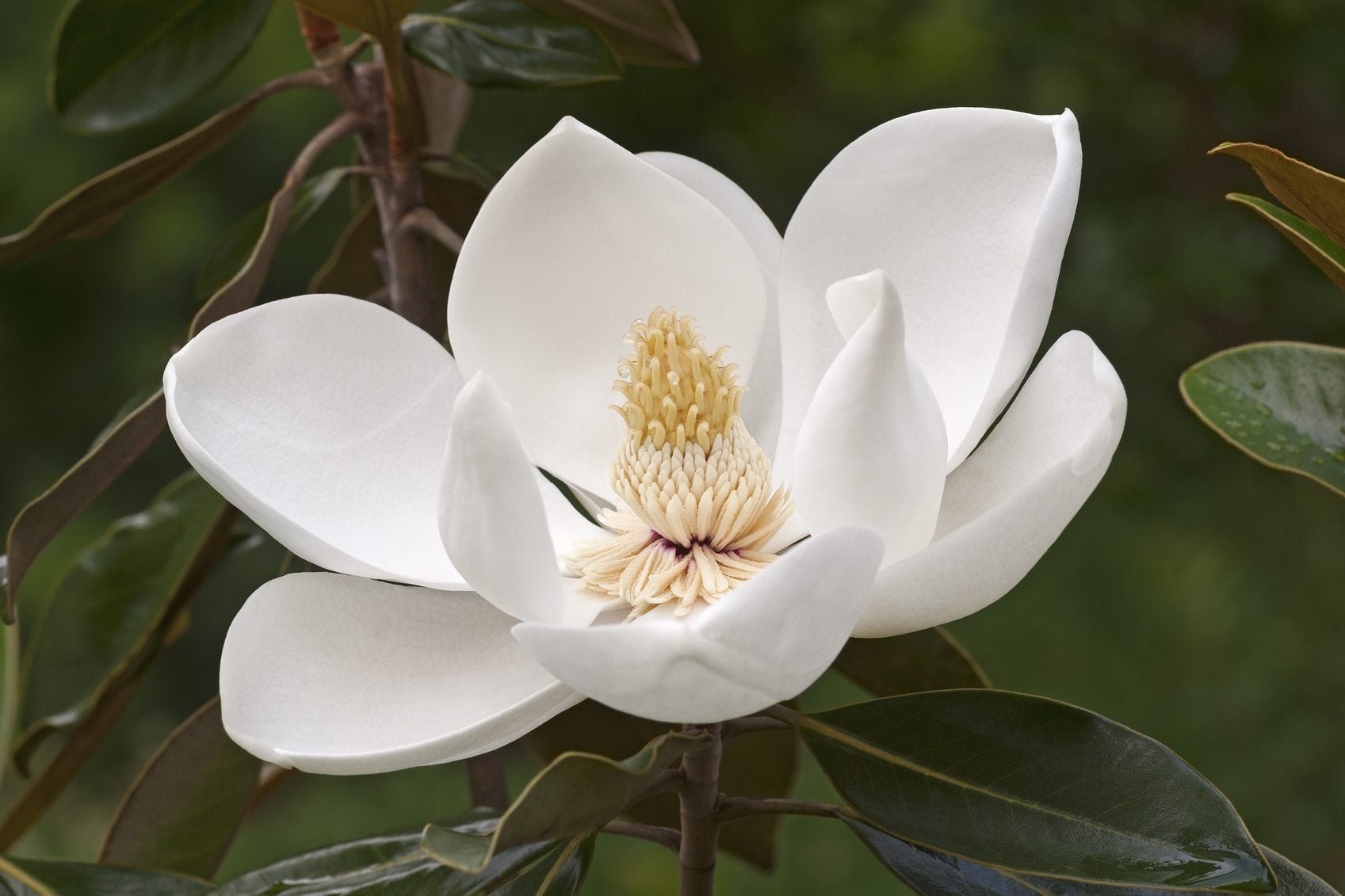Southern Magnolia Facts – Tips On Planting A Southern Magnolia Tree


Southern magnolia (Magnolia grandiflora) is a magnificent tree cultivated for its glossy, green leaves and lovely, white blossoms. Remarkably flexible for an outstanding ornamental, southern magnolia thrives not only in the south but also in the Pacific Northwest. If you are thinking of planting a southern magnolia tree, you’ll want to read up on the trees and their cultural requirements. Read on for all the information you need about southern magnolia care.
Southern Magnolia Facts
Magnolias are named after French botanist Pierre Magnol. He spotted the trees and liked them so much that he brought some to Europe three centuries ago. Before you start growing southern magnolias, you need to realize that your slender saplings will mature into very large trees. Check the size of your planting site before you proceed. These trees grow to a height of 80 feet (24 m.) tall with a spread of some 40 feet (12 m.). Southern magnolia facts suggest that the trees grow quite fast, shooting up some 12 to 24 inches (31-61 cm.) per year.
Is Southern Magnolia Deciduous or Evergreen?
Although many gardeners love the white, fragrant blossoms, the leaves are also beautiful and reason enough to start growing southern magnolias. The leaves are long and leathery, growing up to 10 inches (25 cm.) long. Southern magnolia is an evergreen, so you’ll see those glossy, deep green leaves on the canopy all winter long. The blossoms are also exceptional. The petals grow in white or ivory and these cup-shaped blooms can grow to over a foot (31 cm.) across! Those growing southern magnolia generally rave about the sweet, delightful fragrance of the flowers. When the flowers fade, look for brown cones and bright red seeds.
Southern Magnolia Tree Care
Southern magnolia tree care is easiest when you pick a correct site for this ornamental. Before you start planting a southern magnolia tree, read up on its growing requirements. These magnolias are surprisingly hardy for trees termed “southern.” Southern magnolia facts tell you that they thrive in USDA plant hardiness zones 6 through 10. This means that gardeners in half the nation can cultivate them. On the other hand, you’ll want to find a location with deep, loamy or sandy soil that is acidic or at least pH neutral. The soil must be well draining for the trees to thrive. If you want a healthy tree with the maximum number of spring flowers, plant your magnolia in full sun. It will also grow in partial shade as long as it gets at least four hours a day of direct, unfiltered sunlight. If you live in the north, provide the tree protection from winter sun. The root system of the southern magnolia is shallow and wide spreading. Provide adequate irrigation without leaving the soil wet.
Sign up for the Gardening Know How newsletter today and receive a free copy of our e-book "How to Grow Delicious Tomatoes".

Teo Spengler is a master gardener and a docent at the San Francisco Botanical Garden, where she hosts public tours. She has studied horticulture and written about nature, trees, plants, and gardening for more than two decades, following a career as an attorney and legal writer. Her extended family includes some 30 houseplants and hundreds of outdoor plants, including 250 trees, which are her main passion. Spengler currently splits her life between San Francisco and the French Basque Country, though she was raised in Alaska, giving her experience of gardening in a range of climates.